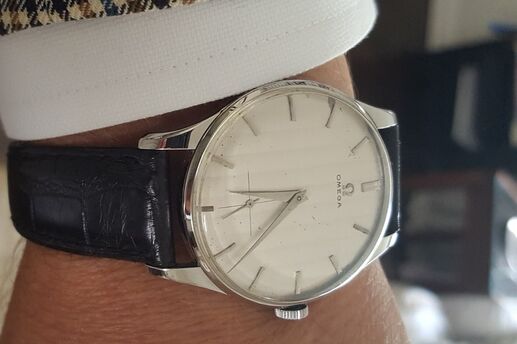Eat Your Way to a More Beautiful Beard
There’s not too much you can do about a receding hairline, other than curse your gene pool. But facial hair is a different story. “The condition of your facial hair directly corresponds to the health of your body,” says Jim White, registered dietitian and American Dietetic Association spokesman. Specifically, he continues, “The same nutrients that have a positive effect on our heart and other major organs also benefit our skin and hair.”
In other words, you can literally eat yourself to a shinier, smoother, more healthy-looking beard. We asked White to tell us which vitamins are an essential part of a healthy facial hair diet, what they do, and how to get them into our diet. Results of our conversation below.
VITAMIN A AND BETA CAROTENE
How they better your beard: “Vitamin A maintains and repairs skin tissue,” says White. “And keeping your skin healthy allows for better hair growth.” Beta carotene is a nutrient that your body converts to vitamin A. Since it’s found in foods that are lower in saturated fats than those that are rich in vitamin A, you’re better off eating foods that are high in beta carotene.
Where to find them: Vitamin A is present in milk, cheese, butter and egg yolks. Beta carotene is found in yellow and orange produce (e.g., carrots, pumpkin, sweet potatoes and papayas) and leafy green veggies (e.g., spinach and kale).
VITAMINS C AND E
How they better your beard: Vitamins C and E promote the production of sebum, a natural oil that is produced by our bodies and lubricates and moisturizes hair, making it look thicker and more lush. Additionally, vitamin C assists in the growth of bodily tissues, including those that comprise our skin and hair follicles.
Where to find them: Citrus fruits, green peppers and broccoli are good sources of vitamin C. Wheat germ oil, almonds, sunflower seeds, safflower oil, peanut butter, corn oil, spinach, broccoli, mangoes and spinach all contain high amounts of vitamin E.
PROTEINHow it betters your beard: Our skin and hair are composed primarily of keratin, a structural protein made up of amino acids. We don’t produce amino acids on our own; instead, we need to eat protein, which the body then converts to amino acids.
Where to find it: Fill up on fish, lean meats, poultry, eggs, rice, beans and milk.
VITAMINS B6, B12 AND BIOTIN
How they better your beard: B vitamins help your body synthesize the protein you eat so it can be used to build new skin cells and hair. Getting enough B vitamins, says White, also helps reduce stress and prevent hair loss.
Where to find them: Fish, poultry, leans meats, eggs, nuts, and whole grains such as brown rice and oatmeal are chock-full of B vitamins. Foods that are rich in B12 include beef, milk, cheese and wheat germ.
OMEGA-3 FATTY ACIDS
How they better your beard: Essential fatty acids are just that: essential to normal growth, including that of facial hair. They also protect cell membranes, helping to prevent your whiskers from getting dry and brittle.
Where to find them: Make sure flax seed oil, walnuts and fatty fish (e.g., salmon) find their way into your diet.
Want to make your beard even more beautiful? Of course you do! Supplementing the above foods with a multivitamin, or with any of the individual nutrients listed above, might do the trick. Just don’t overdo it: Your body will excrete any extra water-soluble vitamins (e.g., vitamin C or B12), but it’ll hold on to extra fat-soluble vitamins (e.g., vitamin A). Excessive doses of vitamin A could actually lead to hair loss. Ask your doctor to recommend a proper dosage, and you’ll soon be on your way to winning whiskers.



